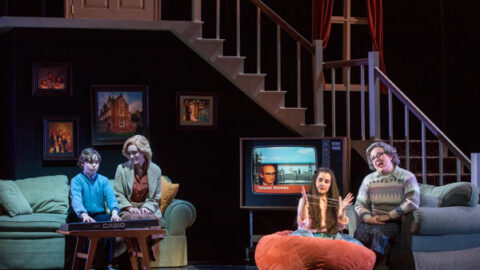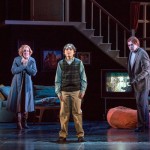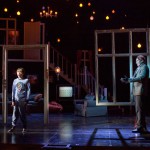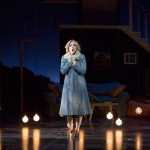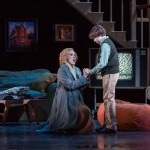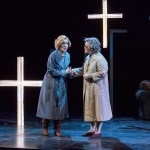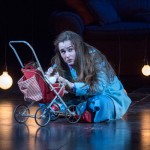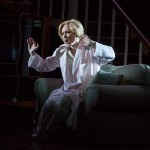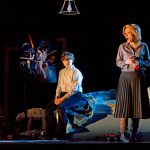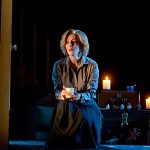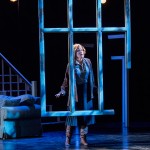 This season the New York City Opera presents 4 new productions: two at BAM, and two at New York City Center. I was lucky to attend the opening matinee of one of these extra muros productions: Britten’s Turn of the Screw on Sunday, February 24. Like many others, I was saddened and worried by the list of unfortunate hardships that stroke the NYCO in the past few years, but this wonderful production was a reassuring sign of its health and sustainability.
This season the New York City Opera presents 4 new productions: two at BAM, and two at New York City Center. I was lucky to attend the opening matinee of one of these extra muros productions: Britten’s Turn of the Screw on Sunday, February 24. Like many others, I was saddened and worried by the list of unfortunate hardships that stroke the NYCO in the past few years, but this wonderful production was a reassuring sign of its health and sustainability.
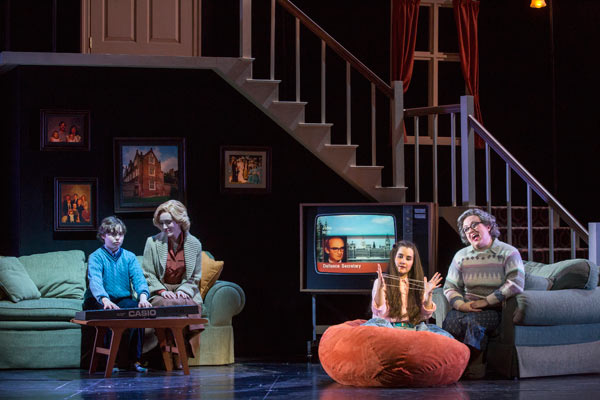
For his opera debut, director Sam Buntrock decided to set the story in the late 1970s or early 1980s—according to Miles’ Star Wars-themed bedroom and David Farley’s set and costumes—and apart from a couple of couple of anachronistic moments (children bowing and curtsying, or spontaneously singing nursery rhymes) it worked rather well. The only thing that fell flat—for me—was the transposition of Henry James’s classic ghost story to a contemporary horror movie: references to The Exorcist, The Shining, and Poltergeist completely flew over my head, even though I thought to myself that Quint was probably the only operatic character who didn’t need a remote to turn a TV on. It might just be a matter of personal taste (I am familiar with all these movies but was never a fan) and others might well read these references very clearly. Or could it be the lighting? Even though very effectively designed by David Weiner (the inside/outside dichotomy being achieved by a spatial organization of hanging bulbs and a foreground/background illumination) the lighting might have been a bit too comforting to inspire horror.
A final attempt to justify my dumb oversight? I was probably very impressed by the performers: vocally speaking, the production was outstanding. Sara Jakubiak was a tormented governess whose expressive and ductile soprano voice served the role to perfection. Dominic Armstrong, both as the Prologue and Peter Quint, combined a booming baritone voice with velvety tones and a delectable, crisp diction. Sharmay Musacchio, in her NYCO debut, was a touching Mrs. Grose and negotiated the wide range of her part with her powerful contralto voice. Soprano Jennifer Goode Cooper (NYCO debut) was the creepy icing on the cake, projecting hollow tones as a banshee-like Miss Jessel.
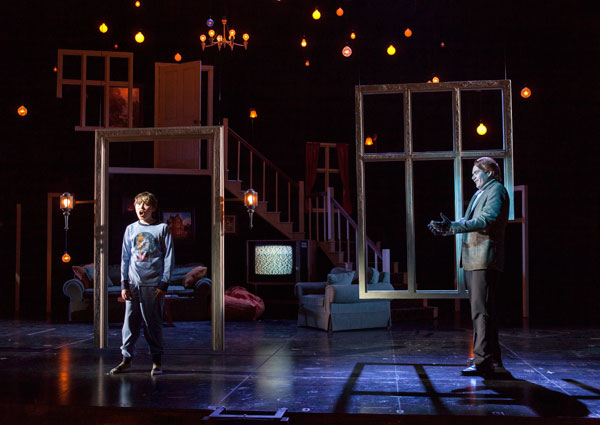
Special mentions go, of course, to Benjamin P. Wenzelberg and Lauren Worsham who incarnated Miles and Flora, the dramatic focus of the entire piece. Wenzelberg (treble) showed some remarkable vocal and acting skills: Miles is not an secondary role but an important part of the entire narrative and he offered a solid performance. Even though Lauren Worsham doesn’t need to be introduced anymore (read our review of Brooklyn Village), she never ceases to astonish: trained both in acting and voice, Worsham seems as confortable singing opera, musical theatre, or indie pop. I was, throughout the performance, repeatedly struck by the precision of her singing and the qualities of her multifaceted tone.
This great NYCO production ushers in Benjamin Britten’s centenary (visit http://www.britten100.org) in New York and provides a refreshing take on his chamber opera masterpiece. Tickets are available for tonight’s performance (February 28) as well as Saturday’s (March 1) on BAM’s website, or on the phone at 718.636.4100. The next two productions will be (back to back) Rossini’s Moses in Egypt and Offenbach’s La Périchole. For more information, visit: http://www.nycopera.com.
—
Thomas Deneuville, the founder and editor of I CARE IF YOU LISTEN, is a French-born composer living in NY. Find him on Twitter: @tonalfreak.
